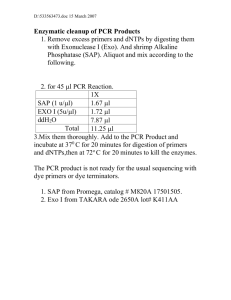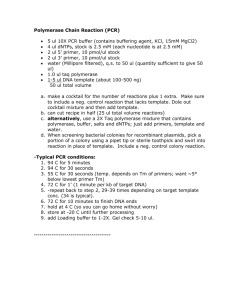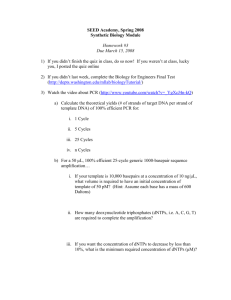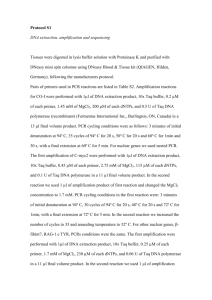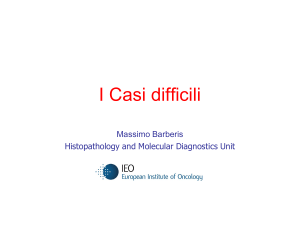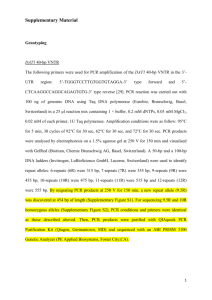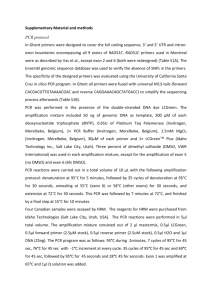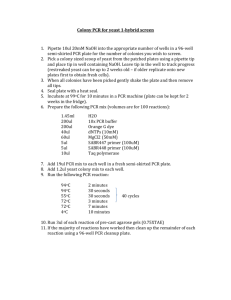SEED_HW3a-2011
advertisement
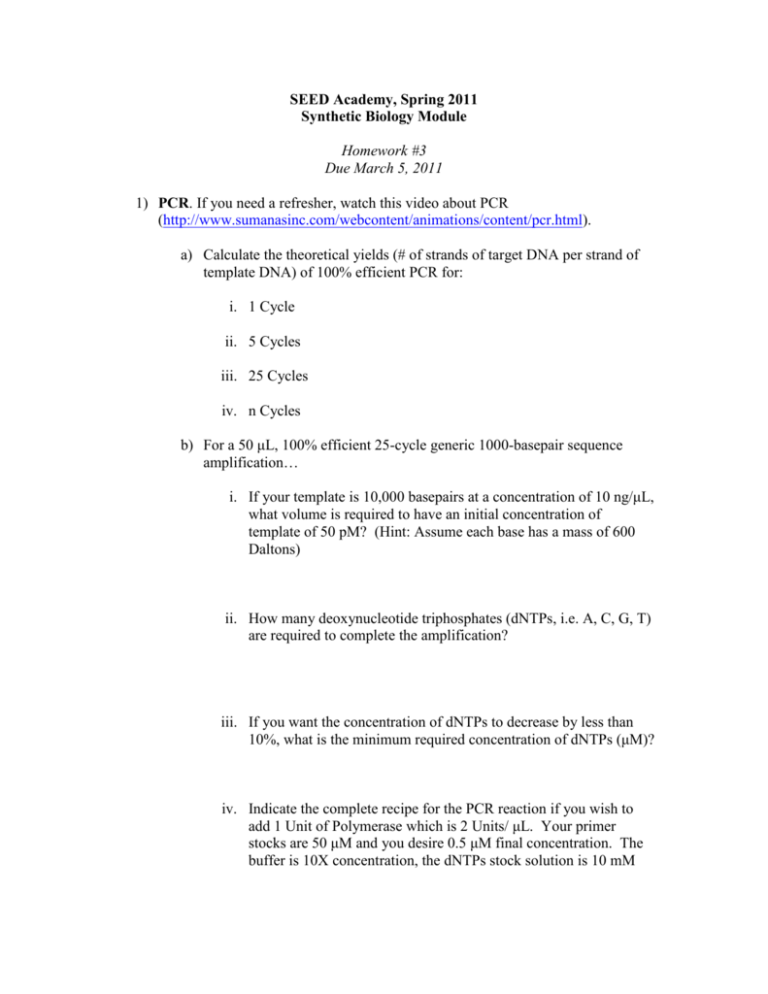
SEED Academy, Spring 2011 Synthetic Biology Module Homework #3 Due March 5, 2011 1) PCR. If you need a refresher, watch this video about PCR (http://www.sumanasinc.com/webcontent/animations/content/pcr.html). a) Calculate the theoretical yields (# of strands of target DNA per strand of template DNA) of 100% efficient PCR for: i. 1 Cycle ii. 5 Cycles iii. 25 Cycles iv. n Cycles b) For a 50 μL, 100% efficient 25-cycle generic 1000-basepair sequence amplification… i. If your template is 10,000 basepairs at a concentration of 10 ng/μL, what volume is required to have an initial concentration of template of 50 pM? (Hint: Assume each base has a mass of 600 Daltons) ii. How many deoxynucleotide triphosphates (dNTPs, i.e. A, C, G, T) are required to complete the amplification? iii. If you want the concentration of dNTPs to decrease by less than 10%, what is the minimum required concentration of dNTPs (μM)? iv. Indicate the complete recipe for the PCR reaction if you wish to add 1 Unit of Polymerase which is 2 Units/ μL. Your primer stocks are 50 μM and you desire 0.5 μM final concentration. The buffer is 10X concentration, the dNTPs stock solution is 10 mM and you want a final concentration of 100 μM: Template ____ μL Buffer ____ μL Polymerase ____ μL dNTPs ____ μL Primers ____ μL Water ____ μL Total _50_ μL c) List the three phases of a PCR cycle, what happens in each phase, and the relative temperature at which this occurs. d) Design the forward and reverse primers (20 base pairs long) you would use to PCR amplify this DNA sequence from your favorite organism. Assume that you want to amplify the entire sequence shown here (i.e. your primers should start at the very edges of the sequence below). 5’ – ATTAGTCTAGAAATTCGCGACGTAGTCAGCA - 3’ 3’ – TAATCAGATCTTTAAGCGCTGCATCAGTCGT - 5’ 2) More on your Final Project At this point we have had a good bit of discussion about the “abstraction hierarchy” in synthetic biology, particularly focusing on devices. Now it’s time to think about your project in terms of the abstraction hierarchy. Last week we asked you to think about how your system would work. The natural question that ensues is this: What devices are necessary to achieve those functions? As you can tell, you should begin to keep a copy of your work on this question to go into your final project! For the 2-3 ideas you considered in more depth last week, complete the following tasks: a) Device List. Very simple: list (or, if easier, describe) the devices your system would need in order to function. Try to think of at least two devices for each system (hint: the easier it is to think about these devices, the more likely it is that your system is plausible). For example, with the bacterial photography system, two devices would be a 1. Light sensor and 2. Color-changer. b) Background Physiology about the Source and Target Strains of Interest We want you to start to think more deeply about the organism in which you would like to work. What would be the capabilities of your “perfect” organism? Can withstand boiling temperatures? Can grow without oxygen? This could include things like where and in what conditions the organisms that have the desired capabilities live, what their nutritional requirements are, etc. The idea is that you think about and determine the organism that is best suited for your needs! Write down 1-3 necessary qualities for your organism and 1-3 potentially suitable organisms. c) Real World Biological Interactions with System Interfaces. From (a) you have a device list. Look into the biological background surrounding these issues (hint: as a first pass, Google and Wikipedia are your BFFs). For example, with the bacterial photography system, you would try to find biological components that respond to light and biological components that can be associated with color change. For both of your devices, write down 2-3 facts describing the biology related to your device. Resources: Google and other search engines, the library (yes, the dreaded library can be good for some things!), Molecular Biology Textbooks, TAs, and Instructors! We will try to get you some personal feedback in the next couple weeks about your project, but if you have some questions you shouldn’t hesitate to email us!

